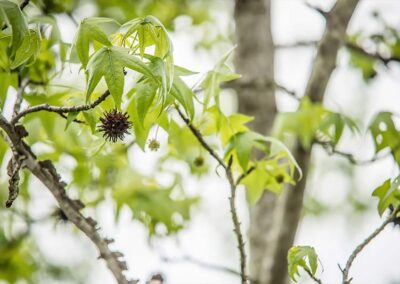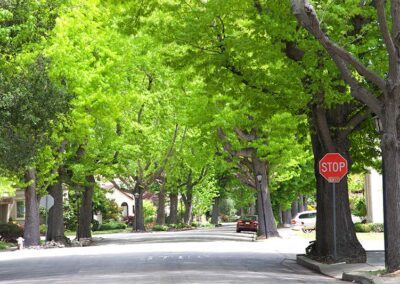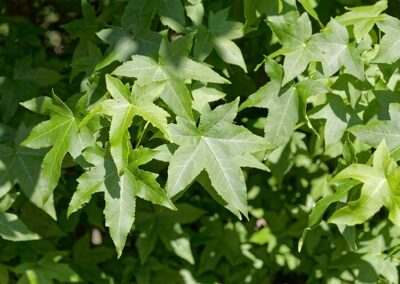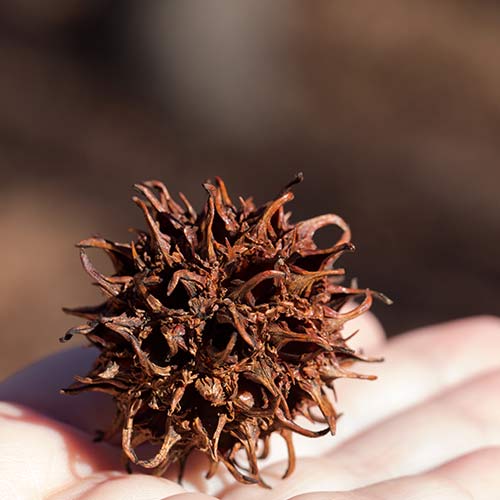
American Sweetgum

Pollen Type: Tree
Cross-Reactivity: Other sweetgums
HS Allergy Extract: Gum, Sweet
Family: Altingiaceae
Genus/Species: Liquidambar styraciflua
Common Names: Sweetgum, American Storax, Hazel Pine, Bilsted, Redgum, Satin Walnut, Star-leaved Gum, Alligatorwood
Distribution: Warm, temperate areas of the eastern United States.
Locations: Floodplains, wet bottomlands, ornamental shade tree, common urban street tree
Pollination Method: Wind-pollinated
Pollinating Period: Winter to summer, depending on elevation.
Description: American Sweetgum is a deciduous tree that can grow up to 150’ in the wild and is known to live up to 400 years. It is symmetrical and crowns into an egg shape. Its bark is light brown with red tinges and sometimes gray with dark streaks. It attaches itself to the trunk in plates edgewise, giving it a deeply fissured appearance with scaly ridges, and is sometimes called “alligator wood.” The dark green star-shaped leaves are 3”-5″ wide and have three distinct bundle scars. They are long and broad, with a petiole (stem) measuring 2.25″-4″. They have a glossy, leathery texture and grow singly and turn yellow, orange, red, and purple in the autumn. Flowers typically appear in spring and continue into autumn/fall, sometimes into winter. They are 1″-1.5″ in diameter, greenish in color, and covered with rust-colored hairs. The staminate (male) flowers are in terminal racemes, 2″-3″ long, while the pistillate (female) flowers are in a solitary head on a slender stem in the axil of an upper leaf. American Sweetgum has a distinctive fruit that is hard, dry, and ball-shaped, measuring 1″-1.5″ in diameter and composed of 40-60 capsules containing one or two tiny seeds and has a pair of terminal spikes (80 to 120 total). Fallen, opened fruits are often plentiful beneath the trees and have been nicknamed “burr balls,” “gum balls,” “space bugs,” “sticker balls,” “spike balls,” or “monkey balls.” The fruit is a multi-capsular spherical head hanging on the branches in winter.





